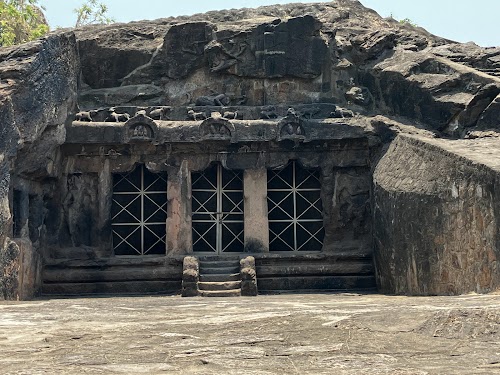
Moghalrajpuram Caves
Krishna, India
- Admire Hindu deity sculptures
- Explore ancient rock-cut cave temples
- Learn about Vishnukundina dynasty
- Photography of historical site
Known for:
Description:
The Moghalrajpuram Caves, located in Vijayawada, Krishna district, Andhra Pradesh, are a set of ancient rock-cut cave temples dating back to the 5th-6th centuries AD. These caves are significant for their early examples of Indian rock-cut architecture and religious iconography. Primarily dedicated to Hindu deities, the caves feature sculptures of Nataraja, Vinayaka, and other Hindu gods. While not as extensive or elaborate as some other cave temple complexes in India, the Moghalrajpuram Caves offer a glimpse into the region's rich historical and artistic past. The caves are relatively small and can be explored within a couple of hours, making them a convenient stop for tourists visiting Vijayawada. The site provides a peaceful atmosphere away from the city's hustle and bustle, allowing visitors to appreciate the ancient artistry and religious significance of the sculptures. Though some carvings are damaged due to weathering and neglect, the site retains its charm and historical importance.
History:
The Moghalrajpuram Caves are believed to have been carved during the Vishnukundina dynasty, who ruled the region between the 5th and 7th centuries AD. The caves reflect early Hindu religious art and architecture, showcasing the religious beliefs and artistic skills prevalent during that period. The presence of sculptures of various Hindu deities suggests that the caves served as places of worship and religious gatherings. Over the centuries, the caves have faced natural weathering and some degree of neglect, leading to the erosion of some sculptures and the overall structure. Despite these challenges, the caves remain an important archaeological site, providing valuable insights into the history and cultural heritage of the Krishna region. Archaeological surveys and studies have been conducted at the site to document and preserve the remaining sculptures and architectural features, ensuring that future generations can appreciate this historical treasure.